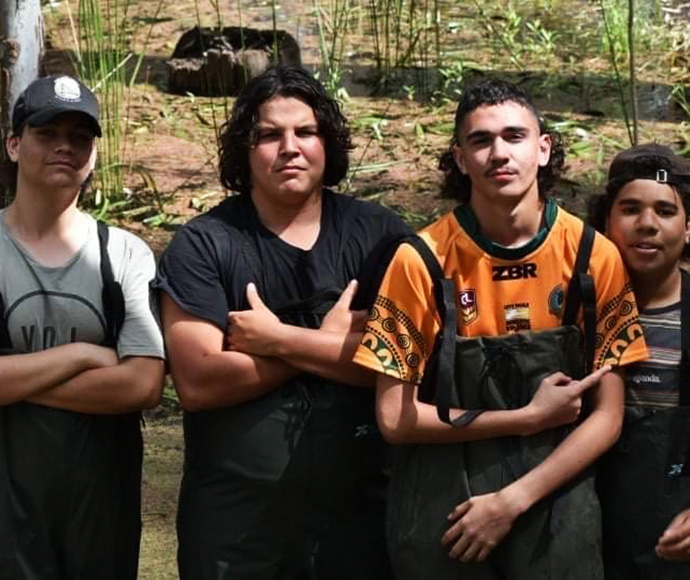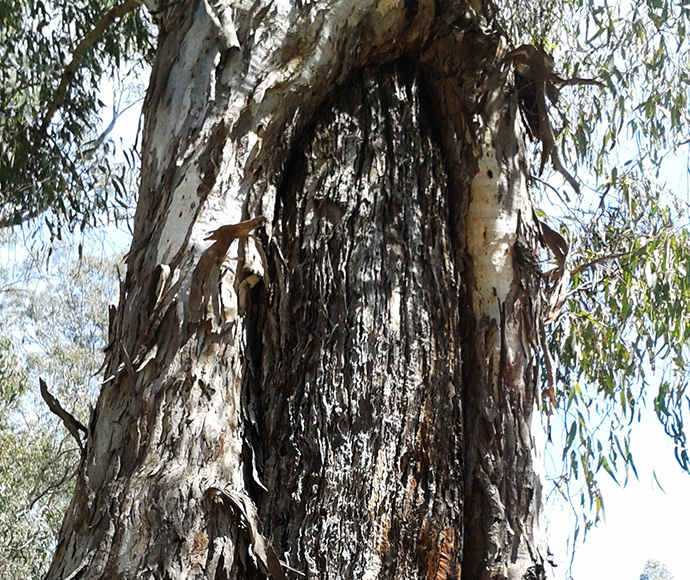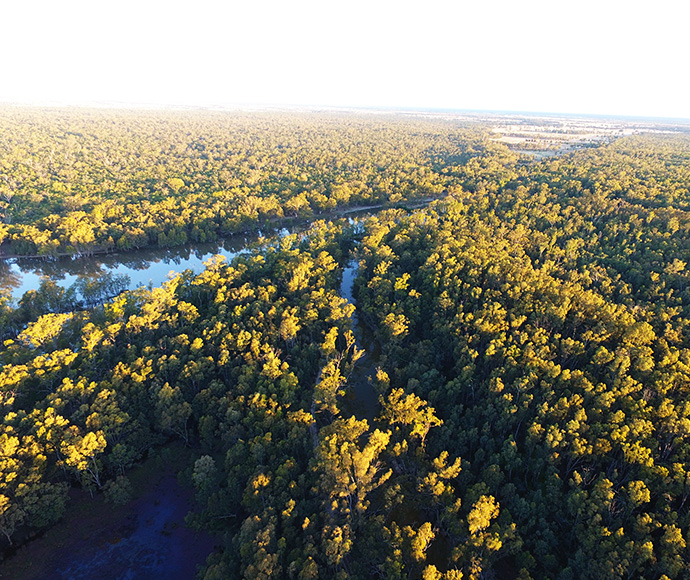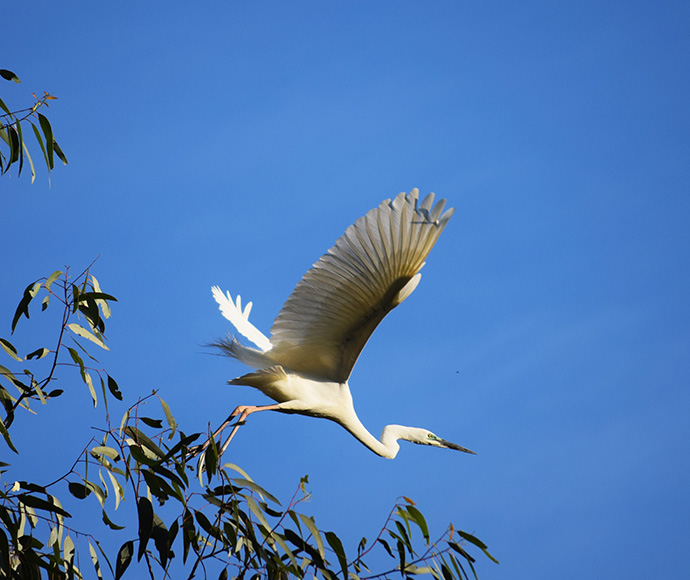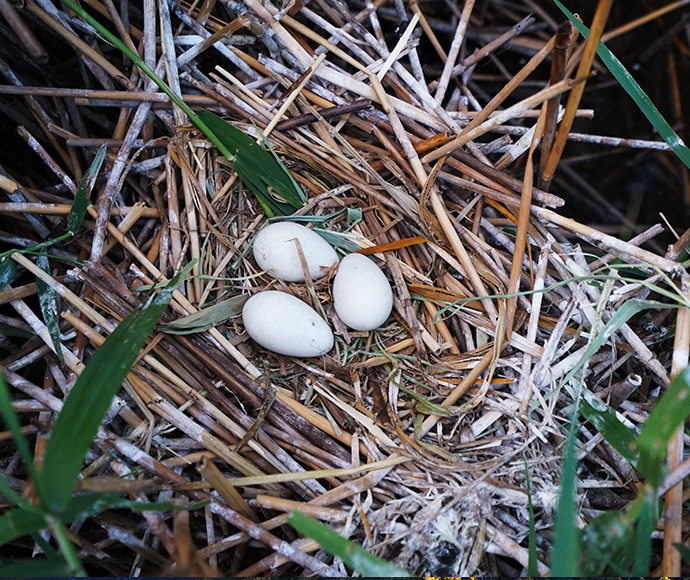Located in Murray Valley National Park (New South Wales) and Barmah National Park (Victoria), the Barmah-Millewa forest is one of 6 'The Living Murray' icon sites on the Murray River. It is the largest river redgum forest in the world and protects over 60 threatened native animal species and 40 threatened plant species. As a Ramsar-listed site, it is recognised for its significant international contribution to wetland biodiversity.
Each year, through The Living Murray Program, the Murray-Darling Basin Authority (MDBA) funds the NSW National Parks and Wildlife Service and Goulburn Broken Catchment Management Authority (Victoria) to monitor these magnificent wetlands for their ecological response to water flows.
Environmental water
The availability and timely application of environmental water are essential for the health of the Barmah-Millewa forest, its wetlands, plants and animals.
Each winter and spring, the Murray River, Edward River and Gulpa Creek regulators are opened to allow water into the forest. In wet years, this may come as flood water. In dry years water can be allocated as environmental water. Both flood water and environmental water benefit the Millewa forest's wetlands, plants and animals by mirroring natural flows, which traditionally peaked at this time of year.
Opening regulators to flood the forest in wet years can help ease flooding pressures on surrounding areas. Regulators are closed at other times, for example, in summer when irrigation demands are high, to allow for a natural drying cycle in the forest.
Under threat
The Barmah–Millewa forest and its natural and cultural heritage are under threat. Due to river regulation, the forest does not receive natural high flows as frequently as it once did, impacting the plant and animal species found within the forest. There are also greater water demands placed on the Murray-Darling Basin system, causing erosion and sand deposits, reducing the Murray River flow capacity.
Climate change is also reducing upstream snowfall and rainfall more generally. This makes the availability of environmental water even more important to the health of the forested wetlands.
Annual monitoring
Each year, the NSW National Parks and Wildlife Service facilitates an ecological health check of the icon site by collaborating with Traditional Owner groups and researchers to monitor fish, waterbirds, bush birds, frogs, turtles, and wetland understory and canopy vegetation.
The reports from this work are reviewed by National Parks and Wildlife Service and Murray-Darling Basin Authority and are published on the Murray-Darling Basin Authority's website.
Indigenous Partnerships Program
The NSW National Parks and Wildlife Service works with the Traditional Owners of the river redgum forests of the Murray Valley National and Regional Park. The Traditional Owner groups include Cummeragunja Local Aboriginal Land Council, Moama Local Aboriginal Land Council, Yorta Yorta Nations Aboriginal Corporation and Bangerang Aboriginal Corporation.
The landscape and all it contains – rivers, forests, plants and animals – are part of cultural beliefs and feature in cultural stories and practices. It is important that the cultural values of the Millewa Forest continue to be protected, and cultural practices may continue.
Funded by The Living Murray's Indigenous Partnership Program, our work with Traditional Owners on cultural and ecological projects and programs aims to facilitate knowledge-sharing opportunities and promote Traditional Owner aspirations.
We continue to work with all First Nations people and recognise their continued connection to Country as the longest living culture on earth.
Communicating with impact
The Living Murray funds visual communication to highlight the ecological and cultural outcomes of the program. Check out The Living Murray videos below. The topics range from frogs and tadpoles, turtles, waterbird nesting, cultural programs, and fish conservation.
20 Years of The Living Murray – Barmah-Millewa forest
The Living Murray program has been supporting Barmah-Millewa Forest for over 20 years. Significant ecological and cultural outcomes have been achieved, but there's much more still to do. Hear about the importance of The Living Murray program for these Ramsar listed wetlands
Bringing back native fish
NSW National Parks and Wildlife Service have been partnering with Traditional Owner groups and other government agencies to reintroduce locally extinct, threatened, small-bodied fish species back into Millewa Forest wetlands. This collaboration is crucial to the survival of such species within the Mid-Murray region.
Electrofishing in the Barmah-Millewa forest
Join us on an electrofishing adventure. The Barmah-Millewa forest provides an important nursery for Murray cod and other native species. The NSW National Parks and Wildlife Service is investigating native fish populations, which are great indicators for the health of waterways.
Native fish rescue – Barmah-Millewa forest
This video depicts the plight of native fish in the wetlands of the Murray River when they are trapped behind regulators. But the NSW National Parks and Wildlife Service is taking action. Check out how we are rescuing native fish species.
Turtles and Traditional Owners in the Barmah-Millewa forest
The NSW National Parks and Wildlife Service is working with Traditional Owner groups to support outcomes for people, community and environment in the Barmah-Millewa forest. This video unpacks the importance of youth programs for First Nations people and demonstrates a culturally significant turtle monitoring program that communities are involved with.
The Living Murray tadpole hunt
Dive into the fascinating world of tadpoles. How does the NSW National Parks and Wildlife Service use tadpoles and frogs to indicate wetland health in the Murray Valley National Park? Find out in the video below.
Waterbirds, waders and widgets in the Barmah-Millewa forest
Barmah-Millewa forest is home to some of the most miraculous waterbirds on the planet. What is one way of monitoring these glorious animals? Drones. Join us as we trial a new technique using infrared cameras to record the success of waterbird breeding.
In search of Moira
Moira grass is a rare grassland maintained by flooding and drying regimes. With river regulation and grazing by feral herbivores, this ecosystem is in decline. The Living Murray Program is monitoring the situation and looking for ways to improve the life cycle of Moira grass and other wetlands species on the floodplain.
More information
- Millewa fish recovery strategy
- Wetlands
- Barmah and Millewa floodplain monitoring reports
- Murray Valley National Park
- Murray–Darling Basin Authority
- Queensland: Murray-Darling Basin
- Australian Capital Territory water programs in the Murray-Darling Basin
- Victoria: Murray-Darling Basin Plan
- South Australia: The Living Murray Program
